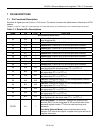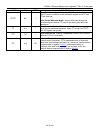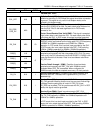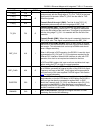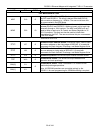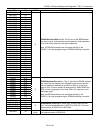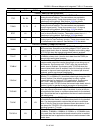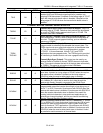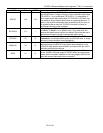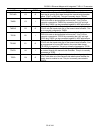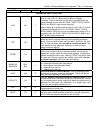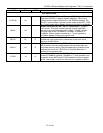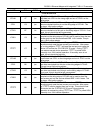
DS33R11 Ethernet Mapper with Integrated T1/E1/J1 Transceiver
33 of 344
NAME PIN TYPE FUNCTION
RSYNC G4 I/O
Receive Sync for the T1/E1/J1 Transceiver: An extracted pulse,
one RCLKO wide, is output at this pin, which identifies either frame
(TR.IOCR1.5 = 0) or multiframe (TR.IOCR1.5 = 1) boundaries. If
set to output-frame boundaries then via TR.IOCR1.6, RSYNC can
also be set to output double-wide pulses on signaling frames in T1
mode. If the receive-side elastic store is enabled, then this pin can
be enabled to be an input via TR.IOCR1.4 at which a frame or
multiframe boundary pulse is applied.
RSYSCLK F4 I
Receive System Clock for the Transceiver: 1.544MHz,
2.048MHz, 4.096MHz, or 8.192MHz clock. Only used when the
receive-side elastic-store function is enabled. Should be tied low in
applications that do not use the receive-side elastic store.
RFSYNC A3 O
Receive Frame Sync (Pre Receive Elastic Store) for T1/E1/J1
Transceiver: An extracted 8kHz pulse, one RCLKO wide, is output
at this pin, which identifies frame boundaries.
RMSYNC U3 O
Receive Multiframe Sync for the T1/E1/J1 Transceiver: An
extracted pulse, one RCLKO wide (elastic store disabled) or one
RSYSCLK wide (elastic store enabled), is output at this pin, which
identifies multiframe boundaries.
RSIG L3 O
Receive Signaling Output: Outputs signaling bits in a PCM
format. Updated on rising edges of RCLKO when the receive-side
elastic store is disabled. Updated on the rising edges of RSYSCLK
when the receive-side elastic store is enabled.



